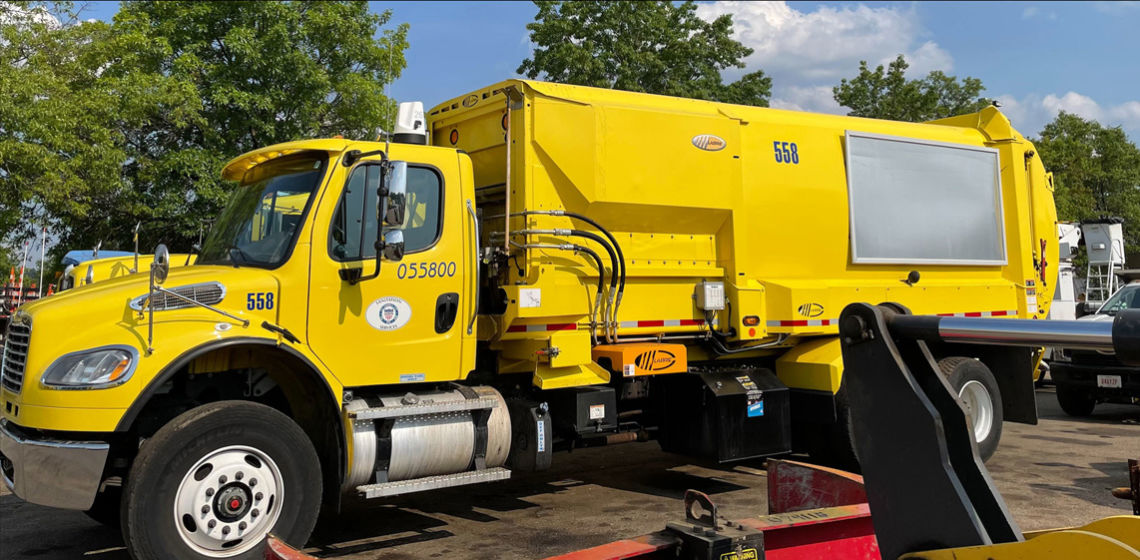SAS deploys IoT sensors to analyse overhead lines
- May 31, 2022
- Steve Rogerson

SAS is using AI and mobile IoT sensors on garbage trucks to analyse overhead equipment emissions data and predict grid failures.
Aging infrastructure, increased maintenance and labour costs, and extended restoration times after unplanned outages are causing problems for energy companies.
Analytics company SAS is helping them with Grid Guardian AI to improve reliability while reducing crew injuries and fatalities without adding equipment. It was launched at last week’s Distributech show in Dallas.
“Utilities have a blind spot when it comes to predicting overhead equipment failure and prioritising predictive maintenance, even if they have an APM application and processes in place,” said John Villali, director of IDC Energy Insights. “Leveraging innovative roaming sensor networks and analysing pre-failure RF emissions using AI and machine learning enables utilities to detect degraded overhead equipment and better understand the types of equipment failures most likely to occur. Combined with readily available circuit-level data, RF emission-based monitoring enables utilities to effectively prioritise maintenance plans for enhanced safety, reliability and uptime.”
Randolph EMC, a rural North Carolina energy cooperative, uses Grid Guardian AI to get ahead of aging overhead equipment failures so the distribution grid remains stable for its members.
“It also helps employees detect problems without taking unnecessary risks in the field or adding new equipment to the grid,” said Dennis Mabe, vice president of engineering at Randolph EMC. “Making data-driven decisions that improve service to our members is our goal. SAS helps us gain new visibility into previously unavailable data. With these insights we can plan and prioritise critical repairs to eliminate failures.”
Grid Guardian AI analyses the data flowing from mobile edge computing sensors mounted to utility and service vehicles, such as garbage trucks, roaming up and down alleys and streets. The sensors read the RF emissions data, and they are analysed with AI and machine learning. The result is energy companies better understand when failures might occur and can more effectively prioritise maintenance schedules.
Grid Guardian AI provides software and services that are claimed to reduce injury rates by 38%, identify degraded overhead equipment without added sensors, reduce crew overtime costs by 33%, and improve distribution reliability by 18%.
“SAS Grid Guardian AI combines unprecedented continuous distribution grid equipment condition assessment and the power of AI to enable predictive and prescriptive grid management,” said John Lauletta, CEO of Exacter. “This is a breakthrough in grid reliability and resilience.”
Exacter president Geoffrey Bibo added: “Our sensing technology coupled with SAS analytics and insights brings a new level of predictive grid management to utility reliability efforts.”
And Jason Mann, vice president of IoT at SAS, said: “Restoring consumer confidence in the reliability of the distribution grid is critical, and a big part of restoring that confidence comes from strengthening the infrastructure. Experts point to RF emissions as a significant early predictor of future overhead equipment failures. SAS Grid Guardian AI, which could pay for itself in less than a year, combines advanced analytics and AI with innovative mobile IoT sensing technology to prioritise overhead equipment repairs to maintain grid efficiency.”
Exacter is an industrial IoT sensor development company that focuses on electric utilities worldwide. Its multiple patents and algorithms create a technology for providing visibility into grid health, areas of safety and system risk, and informing asset management and intelligence-based reliability initiatives.




